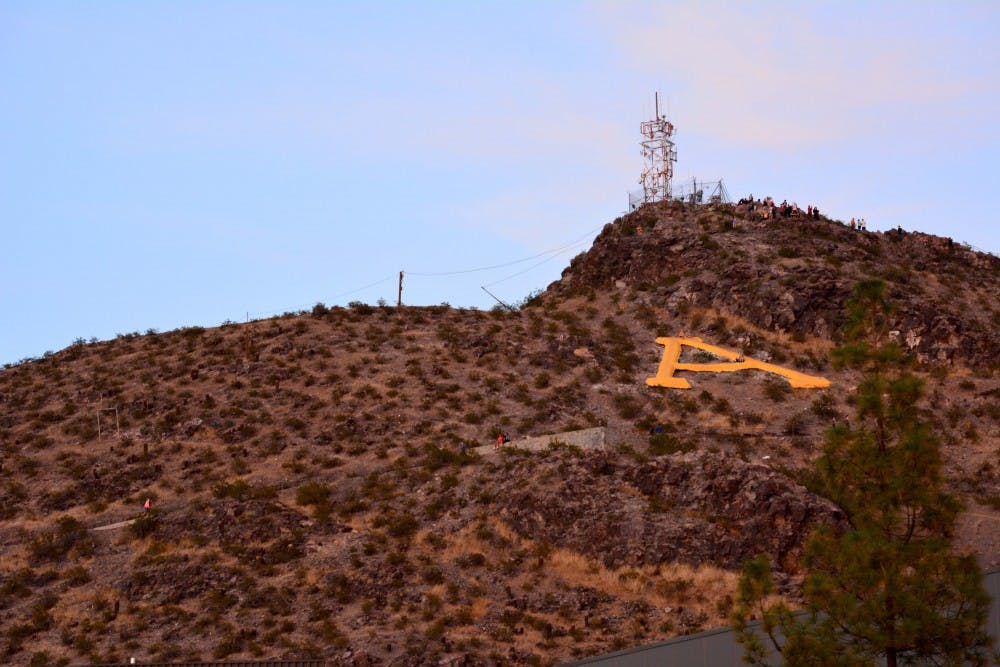 Hayden Butte Mountain sporting the iconic ASU “A” as seen on Jan. 18 in Tempe. Due to the paint war between ASU and rival UA, historic petroglyphs on the mountain have been damaged. (Krista Tillman/ The State Press).
Hayden Butte Mountain sporting the iconic ASU “A” as seen on Jan. 18 in Tempe. Due to the paint war between ASU and rival UA, historic petroglyphs on the mountain have been damaged. (Krista Tillman/ The State Press).Known to most as “A” Mountain, Hayden Butte Preserve Park sports more historical markings than the golden “A” emblazoned on the slope.
The butte, a central Native American landmark years ago, contains around 500 ancient Native American drawings and petroglyphs, which is suspected to have been made between 750 and 1450 A.D.
Unfortunately, as "A" Mountain transformed from an ancient Native American historic site into an ASU landmark, more people have taken to hiking the mountain and fewer people have started noticing the petroglyphs and other artifacts, Tempe Historic Preservation Officer John Southard said.
“As Tempe has grown, as ASU has grown, usage of the butte has increased, and unfortunately along with that you have erosion of some of the petroglyphs and things," Southard said. "You also have vandalism, unfortunately. Whether you have people carving their names, spray painting or even ... breaking off portions of a rock.”
Vandalism and damage to the rocks became such a massive issue that the city of Tempe hired a rock art conservator to assess the damage to the petroglyphs, strip away the paint and graffiti and try to restore the art to its original quality.
However, based on the make-up of the paint and the rocks, many times the paint didn’t come all the way off. And after countless restorations, many of the petroglyphs began to fade.
Tempe once had to pay $10,000 to remove bright red paint from rocks with petroglyphs on them when some UA fans painted on the opposite side of "A" Mountain.
However, most of the damage is unintentional and is caused by hikers climbing off the trail and on the rocks, which accidentally rubs away at the paintings.
“Visitation and usage is certainly a concern,” Southard said.
While a more visible trail has helped the city control the vandalism and wearing away of the petroglyphs, deterioration still remains a problem, retired Tempe History Museum Manager Amy Douglass said.
“It’s an educational issue, educating the people that use the park," Douglass said. We had plans to put up some interpretive signage. There actually is a sign now up at the top that says ‘Please don’t climb on the rocks. You’ll disturb the petroglyphs.’”
Douglass said she believes a more permanent solution, one that provoked serious discussion, is to build a platform at the top of the mountain to keep people off of the petroglyphs and ensure nothing is damaged.
“An education process is what really needs to happen,” Douglass said.
Reach the reporter at megan.janetsky@asu.edu or follow @meganjanetsky on Twitter.
Like The State Press on Facebook and follow @statepress on Twitter




